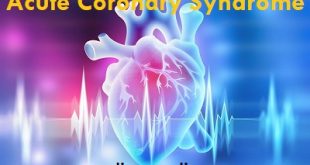Definition
Aspergillosis is an infection caused by a type of mold. The illnesses resulting from aspergillosis infection usually affect the respiratory system, but their signs and severity vary greatly. The mold that triggers the illnesses, Aspergillus, is everywhere, indoors and outdoors. Most strains of this mold are harmless, but a few can cause serious illnesses when people with weakened immune systems, underlying lung disease or asthma inhale their spores.
Microscopic view of Aspergillus
Forms of Aspergillosis
There are several forms of aspergillosis:
- Allergic pulmonary aspergillosis is an allergic reaction to the fungus. This infection usually develops in people who already have lung problems such as asthma or cystic fibrosis.
- Aspergilloma is a growth (fungus ball) that develops in an area of past lung disease or lung scarring such as tuberculosis or lung abscess.
- Invasive pulmonary aspergillosis is a serious infection with pneumonia. It can spread to other parts of the body. This infection occurs most often in people with a weakened immune system. This can be from cancer, AIDS, leukemia, an organ transplant, chemotherapy, or other conditions or drugs that lower the number or function of white blood cells or weaken the immune system.
Pathophysiology
Upon inhalation of the conidia, the underlying host defenses determine the fate of the organism. Immunocompetent hosts with intact ciliary clearance promptly eliminate the organism from the respiratory tract.
The early immune defense is provided by pulmonary macrophages that attempt to phagocytose and destroy the conidia. When conidia survive, germination leads to hyphae (filamentous form), which invades the pulmonary parenchyma. Polymorphonuclear leukocytes phagocytose the swollen conidia and hyphae.
During the invasion, interaction occurs between Aspergillus ligands and the pattern recognition receptors, including Toll-like receptors (TLR) and Dectin, on macrophages leading to the production of pro-inflammatory cytokines. Fever is the resultant clinical manifestation.
Causes of Aspergillosis
The illness is the result of a combination of exposure to the Aspergillus fungus and a weak immune system. The following may carry the fungus:
- Compost piles
- Stored Grain
- Marijuana leaves
- Decaying vegetation
Risk factors
- Allogeneic stem cell transplantation
- Prolonged severe neutropenia (>10 days)
- Immunosuppressive therapy
- Chronic granulomatous disease (CGD)
- Solid organ transplantation (SOT)
- Acute leukemia
- Aplastic anemia
- Pre-existing cavity (aspergilloma)
- Advanced chronic lung disease
- Primary immunodeficiency
- HIV infection
- Diabetes mellitus
- Cystic fibrosis
- Severe burns
- Malnutrition
- Multiple myelomas
- Immunocompetent patients
- Age >55 years
- Smoking
Symptoms of Aspergillosis
Symptoms usually depend on the type of infection:
Symptoms of allergic pulmonary aspergillosis may include:
- A cough
- Coughing up blood or brownish mucus plugs
- Fever
- General ill feeling (malaise)
- Wheezing
- Weight loss
Other symptoms depend on the part of the body affected, and may include:
- Bone pain
- Chest pain
- Chills
- Decreased urine output
- Headaches
- Increased phlegm production, which may be bloody
- Shortness of breath
- Skin sores (lesions)
- Vision problems
Complications of Aspergillosis
- Life-threatening hemoptysis
- Disseminated infection
- Severe hypoxia
- Obstructive pneumonia
- Pericarditis
Diagnosis and Test
Imaging test
A chest X-ray or computerized tomography (CT) scan – a type of X-ray that produces more-detailed images than conventional X-rays do – can usually reveal a fungal mass (aspergilloma), as well as characteristic signs of invasive and allergic bronchopulmonary aspergillosis.
Aspergillosis Precipitin Test
Aspergillus precipitin detects the type and quantity of specific Aspergillus antibodies in the blood. Antibodies are immunoglobulin proteins made by the immune system in response to harmful substances called antigens. An antigen is a substance that your body recognizes as a threat. One example is an invading microorganism such as Aspergillus.
Biopsy.
In some cases, examining a sample of tissue from your lungs or sinuses under a microscope may be necessary to confirm a diagnosis of invasive aspergillosis.
Treatment and medications
Treatment options include oral corticosteroids, antifungal medications, and surgery.
Oral corticosteroid drugs: Solid or liquid oral medications may be prescribed to treat allergic bronchopulmonary aspergillosis. These drugs reduce inflammation and prevent respiratory symptoms. Some of the drugs are prednisone, prednisolone, and methylprednisolone.
Antifungal drugs: These medications are generally used to treat invasive pulmonary aspergillosis. Voriconazole is currently the drug of choice because it causes fewer side effects and appears to be more effective than other medications. Amphotericin B or itraconazole is also effective in treating the infection. Caspofungin is sometimes used in cases where the infection is resistant to the other antifungals.
Surgery: Surgery may be necessary in cases when aspergillomas are present and cause serious problems, such as excessive bleeding. Antifungal medications are usually not effective against aspergillomas, so surgery is recommended.
Prevention of Aspergillosis
- It is best to avoid locations with excessive amounts of dust or mold, such as construction sites or compost piles.
- People with weakened immune systems or mold allergies should avoid activities such as gardening or lawn mowing.
- If exposure to airborne dust or mold is likely, considering wearing a face mask or N95 mask.
- In some cases, your doctor might recommend the use of an antifungal medicine to prevent infection.
 Diseases Treatments Dictionary This is complete solution to read all diseases treatments Which covers Prevention, Causes, Symptoms, Medical Terms, Drugs, Prescription, Natural Remedies with cures and Treatments. Most of the common diseases were listed in names, split with categories.
Diseases Treatments Dictionary This is complete solution to read all diseases treatments Which covers Prevention, Causes, Symptoms, Medical Terms, Drugs, Prescription, Natural Remedies with cures and Treatments. Most of the common diseases were listed in names, split with categories.








details about breast pain in breastfeeding mother, causes, risk factor and the best treatment
sure we will update very soon.
Why is surgical procedure preferred choice in treating aspergiloma?Is there no antifungal agent that can permeate the tumor cell that can prevent the patient from going under the knife.
Yes, there are antibiotics please read the post. Yes, it sometimes needed if the affected area is completely eroded.
salphangites details disease and treatment
cervicitis disease and treatment details
very soon we will upload in posts. keep reading upcoming posts. thank you.
palvic inflammation disease details or uterine prolapse
very soon we will upload in posts. keep reading upcoming posts. thank you.
I have had my mouth and tongue severely broke out very painful for maybe 5 days at a time. I have used some liquid rinse my doctor gave me and said that should clear whatever kind of bacteria it was out but never cleared up and I have also used the purple thrash medicine for babies. Nothing has worked. What should I do? Asking for anyone, please help..
Please get diagnosed first and your doc will find the best way to treat it.